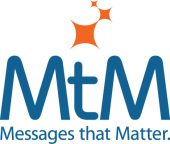If you’ve tried to improve marketing effectiveness and not had much success, consider one simple solution and a more radical one. Both are based on positioning.
The simple solution is to use your position as the foundation for everything you do in marketing. Use it as much as possible and repeat it often.
The radical solution is to change your position because it doesn’t meet four criteria I use to determine the potential effectiveness of a position. Your target audience will pay attention to your marketing when your position is unique, important, believable and usable.
Repetition is key to claiming a position in your market
But an effective position that meets the four criteria won’t improve your marketing unless you use it so often you get sick of it.
One of the biggest problems I encounter in B2B technology marketing is failure to effectively execute what has the potential to be a compelling position – that mental space in your target audience’s mind that you can occupy with an idea that has compelling meaning to the recipient. It’s in this mental space where your solution to the target’s pressing problem meet and form a meaningful relationship.
I can’t count the times that I’ve visited a website that had a strong position stated on its home page, and the position was never mentioned again, or at best on the “About us” page.
While the most thoughtful and logical position may interest your prospect, it won’t trigger a buying decision unless the portion of the brain that makes decisions understands and remembers it. You make your claims more memorable by repeating them. Even repetition of a few simple words sends a strong signal to the brain, prompting it to note, “I should remember that.”
Repeat your claims so that the decision-making portion of the brain will bookmark them as important. Donald Trump uses this technique to great effect all the time.
Test your position using four criteria
To determine if you need to use your position a lot more or change it, use the four criteria to decide what to do. If your positioning statement is important, unique, believable and usable, simply use it a lot more in all marketing communications. If it doesn’t meet one of the four criteria, it’s time to change your position. Here’s an explanation of the criteria.
Important
A positioning statement responds to a prospect’s primary problem. By doing so, the statement creates confidence in your ability to offer a desirable solution, and it creates a sense of urgency in your prospect’s mind.
Understanding customer concerns is essential to position effectively. Interviewing customers and then ranking their problems is an important step in the Messages that Matter positioning framework. Your positioning statement should state a benefit that solves one of the top problems, and ideally, the No. 1 problem.
Believable
B2B technology buyers have learned to doubt nearly every claim they read or hear. Effective positioning allows us to cut through cynicism by making our case in simple, believable, compelling language.
Effective positioning statements recognize prospects’ inherent skepticism by avoiding exaggerated or meaningless claims. A believable positioning statement “rings true” by referencing existing market conditions.
Unique
Positioning always occurs in a competitive environment. Therefore, a positioning statement should express a benefit that no other company is claiming. I use a technique called perceptual mapping that shows you how you are positioned relative to the competition. How to differentiate is explained in my workshop and book.
When you make a unique claim, two things happen. First, you raise a significant barrier to competition. Second, you increase the desirability of your offering. These two outcomes can significantly impact sales volume, market share, and profitability.
Usable
Your positioning statement should easily adapt to all marketing communications to take advantage of the power of consistency and repetition.
You can position effectively by following this simple advice: whenever you are communicating about your product, first consider using your positioning statement as the theme or central idea for the marketing piece. It won’t always be appropriate, but most of the time it will.
You can test for usability by writing a draft press release, website home page copy, a one-page brochure, product spec sheet, etc. I like to write several product descriptions starting with 75 words and adding 75 words for several iterations.
You only want to use one positioning statement in public so if you need to market to secondary buyers, make sure your proposed positioning statement can be used to market to them.
Conclusion
When your positioning statement is important, unique, believable and usable, you can be confident that your target market will listen to your marketing message. It helps buyers associate a benefit with your product or service that makes them want to buy.
With time, money and ruthless focus, you can claim a position by consistently executing it in all your marketing communications and then repeating it, and repeating it, and repeating it…
